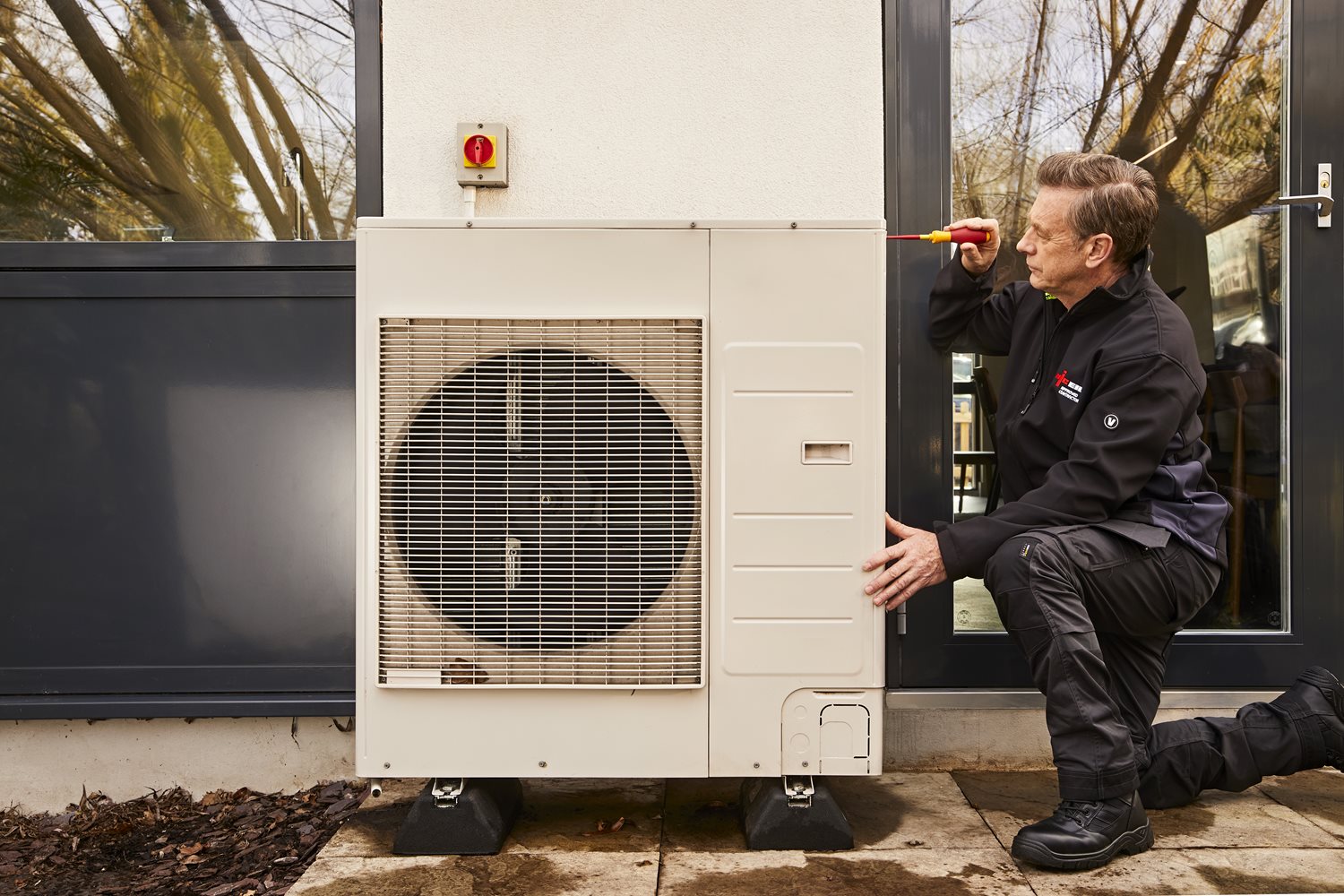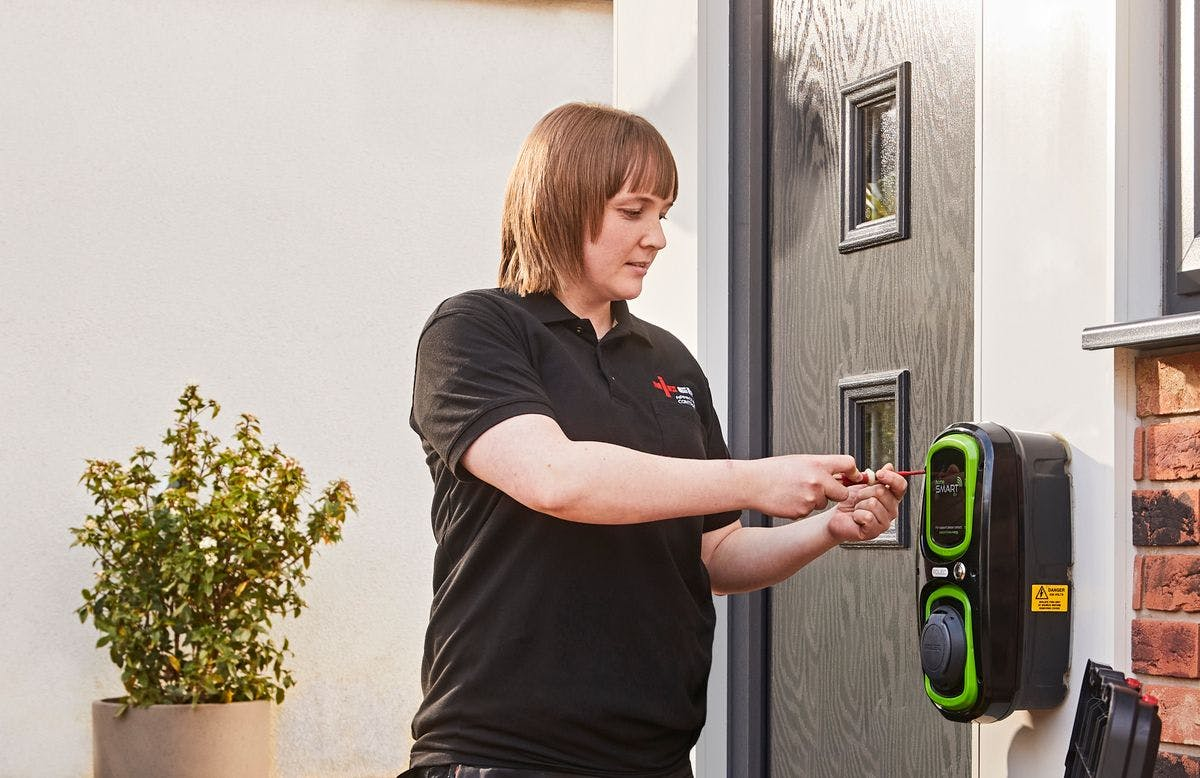Heat pumps are rapidly becoming the heating system of choice for eco-conscious homeowners. Our experts explain how they work.
Heat pumps – electricity-powered heating systems that offer a low carbon, energy-efficient alternative to traditional gas boilers – are quickly gaining in popularity. Well over 98,000 heat pumps were sold in 2024, according to the Heat Pump Association – a 64% increase on the previous year.
To find out more about the different types of heat pumps, the costs of installing one, and what you might stand to save on your energy bill, check out our comprehensive guide to heat pumps here.

Step 1: absorbing heat
Outside your home, a special fluid called a refrigerant circulates through coils in the heat pump’s external unit. Even in low temperatures, this refrigerant is designed to soak up warmth from the air, ground, or water source surrounding your property.
Step 2: compressing the refrigerant
The refrigerant then passes through a compressor inside the pump. This compressor squeezes the refrigerant, which raises its temperature dramatically and changes it from a cool liquid into a hot gas.
Step 3: delivering heat indoors
The hot gas flows through a heat exchanger in your indoor unit, transferring its heat to your home’s central heating system – warming your radiators, underfloor heating, or hot water tank, depending on your setup.
Step 4: returning the refrigerant
After releasing its heat, the refrigerant cools down and becomes a liquid once again. It then cycles back to the external unit, ready to start the process over, all using far less energy than conventional heating systems.
This closed-loop process means heat pumps can provide reliable warmth efficiently year-round – even on chilly days – and help lower both your carbon footprint and energy bills.
However, there are differences in terms of where the different types of heat pumps source their heat, and how they then distribute it throughout your home or building.
Air-to-water heat pumps
The most common type of heat pump currently installed in UK properties, air-to-water heat pumps source their heat from the air outside and distribute it via your hot water system. This type of heat pump works well in combination with large radiators and underfloor pipes.
Air-to-air heat pumps
These heat pumps are rarer than their air-to-water cousins, but they do have some distinct benefits. Whilst they, like air-to-water heat pumps, source their heat from the air outside, they instead distribute it via a network of ducts and indoor units that push heated air into your home.
The main benefit of air-to-air heat pumps is they can also function in reverse, pushing hot air outside to keep your home cool in summer.
Ground source heat pumps
Ground source heat pumps extract heat from the earth using a network of buried pipes laid in horizontal trenches or deep vertical boreholes. Instead of refrigerant, these pipes (also known as the ground loop) contain a mixture of water and antifreeze (brine). The heat is then transferred to the refrigerant in the heat pump unit (located inside your home), where the refrigeration cycle begins.
The extracted heat is usually distributed around your home via your hot water system, just like an air-to-water model.
Although more expensive due to the landscaping involved, ground source models can be more reliable due to the relative warmth and stability of underground temperatures compared to the air, even in winter.
Water source heat pumps
If your home is located near a water source, you may want to consider a water source heat pump.
There are two types of water source systems:
Closed loop systems: these work similarly to ground source models, extracting heat from the water using a network of underwater pipes circulating a mixture of antifreeze (brine) and water.
Open loop systems: these pump water from the water source directly through your heat pump, where the heat is extracted and distributed via the refrigeration cycle.
For each unit of electricity used by a typical heat pump, you’ll get three to four units of heat. In comparison, an energy efficient gas boiler converts around 90% of its fuel into heat – meaning you’re actually getting slightly less heat than you’re paying for.
The energy efficiency of a particular heat pump model can be calculated using the SCOP (seasonal coefficient of performance) model. This is a way to rate a heat pump’s performance in a given climate. The most energy efficient heat pump models currently on the market can achieve a maximum SCOP rating of 5 or more, meaning they can – in ideal conditions – generate 500% more heat than the electricity they consume.
If you do decide to bite the bullet, make sure you choose a heat pump technician who’s registered with the Microgeneration Certification Scheme (MCS Scheme). Certification on this scheme shows your chosen contractor is competent to install and maintain low carbon technologies like heat pumps and solar panels. Heat pump technicians registered with NICEIC’s MCS Approved Contractor Scheme are subject to regular assessments to ensure they’re complying with all the relevant requirements and standards, and that they’re delivering safe, high-quality installations.
It’s easy to find a trusted professional for your heat pump installation with NICEIC’s Find a Trusted Tradesperson tool – simply input your job, location and contact details to connect with registered heat pump technicians near you.
To find out more about the different types of heat pumps, the costs of installing one, and what you might stand to save on your energy bill, check out our comprehensive guide to heat pumps here.

So, how do heat pumps work?
Heat pumps are heating systems that use electricity to transfer heat from one location (for example, the air, ground, or a water source) to another (your home). It can do this even when it’s cold outside through a process called a refrigeration cycle – here’s how, step by step.Step 1: absorbing heat
Outside your home, a special fluid called a refrigerant circulates through coils in the heat pump’s external unit. Even in low temperatures, this refrigerant is designed to soak up warmth from the air, ground, or water source surrounding your property.
Step 2: compressing the refrigerant
The refrigerant then passes through a compressor inside the pump. This compressor squeezes the refrigerant, which raises its temperature dramatically and changes it from a cool liquid into a hot gas.
Step 3: delivering heat indoors
The hot gas flows through a heat exchanger in your indoor unit, transferring its heat to your home’s central heating system – warming your radiators, underfloor heating, or hot water tank, depending on your setup.
Step 4: returning the refrigerant
After releasing its heat, the refrigerant cools down and becomes a liquid once again. It then cycles back to the external unit, ready to start the process over, all using far less energy than conventional heating systems.
This closed-loop process means heat pumps can provide reliable warmth efficiently year-round – even on chilly days – and help lower both your carbon footprint and energy bills.
Do different types of heat pump work differently?
All heat pumps work according to the same fundamental principle: extracting heat from the environment and transferring it to your home via the refrigeration cycle described above.However, there are differences in terms of where the different types of heat pumps source their heat, and how they then distribute it throughout your home or building.
Air-to-water heat pumps
The most common type of heat pump currently installed in UK properties, air-to-water heat pumps source their heat from the air outside and distribute it via your hot water system. This type of heat pump works well in combination with large radiators and underfloor pipes.
Air-to-air heat pumps
These heat pumps are rarer than their air-to-water cousins, but they do have some distinct benefits. Whilst they, like air-to-water heat pumps, source their heat from the air outside, they instead distribute it via a network of ducts and indoor units that push heated air into your home.
The main benefit of air-to-air heat pumps is they can also function in reverse, pushing hot air outside to keep your home cool in summer.
Ground source heat pumps
Ground source heat pumps extract heat from the earth using a network of buried pipes laid in horizontal trenches or deep vertical boreholes. Instead of refrigerant, these pipes (also known as the ground loop) contain a mixture of water and antifreeze (brine). The heat is then transferred to the refrigerant in the heat pump unit (located inside your home), where the refrigeration cycle begins.
The extracted heat is usually distributed around your home via your hot water system, just like an air-to-water model.
Although more expensive due to the landscaping involved, ground source models can be more reliable due to the relative warmth and stability of underground temperatures compared to the air, even in winter.
Water source heat pumps
If your home is located near a water source, you may want to consider a water source heat pump.
There are two types of water source systems:
Closed loop systems: these work similarly to ground source models, extracting heat from the water using a network of underwater pipes circulating a mixture of antifreeze (brine) and water.
Open loop systems: these pump water from the water source directly through your heat pump, where the heat is extracted and distributed via the refrigeration cycle.
Why are heat pumps more energy efficient than boilers?
The primary reason why heat pumps are more energy efficient than boilers is because they don’t generate heat from fuel, but instead transfer existing heat elsewhere.For each unit of electricity used by a typical heat pump, you’ll get three to four units of heat. In comparison, an energy efficient gas boiler converts around 90% of its fuel into heat – meaning you’re actually getting slightly less heat than you’re paying for.
The energy efficiency of a particular heat pump model can be calculated using the SCOP (seasonal coefficient of performance) model. This is a way to rate a heat pump’s performance in a given climate. The most energy efficient heat pump models currently on the market can achieve a maximum SCOP rating of 5 or more, meaning they can – in ideal conditions – generate 500% more heat than the electricity they consume.
Could a heat pump be right for me?
There are a wide range of factors to consider when deciding whether a heat pump is right for your home. You can find out more about the pros and cons of heat pumps, the cost of installing, what you could stand to save on your energy bill, and the financial support available to homeowners, in our comprehensive guide to heat pump installation.If you do decide to bite the bullet, make sure you choose a heat pump technician who’s registered with the Microgeneration Certification Scheme (MCS Scheme). Certification on this scheme shows your chosen contractor is competent to install and maintain low carbon technologies like heat pumps and solar panels. Heat pump technicians registered with NICEIC’s MCS Approved Contractor Scheme are subject to regular assessments to ensure they’re complying with all the relevant requirements and standards, and that they’re delivering safe, high-quality installations.
It’s easy to find a trusted professional for your heat pump installation with NICEIC’s Find a Trusted Tradesperson tool – simply input your job, location and contact details to connect with registered heat pump technicians near you.






